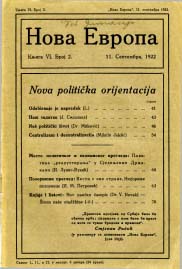
We kindly inform you that, as long as the subject affiliation of our 300.000+ articles is in progress, you might get unsufficient or no results on your third level or second level search. In this case, please broaden your search criteria.

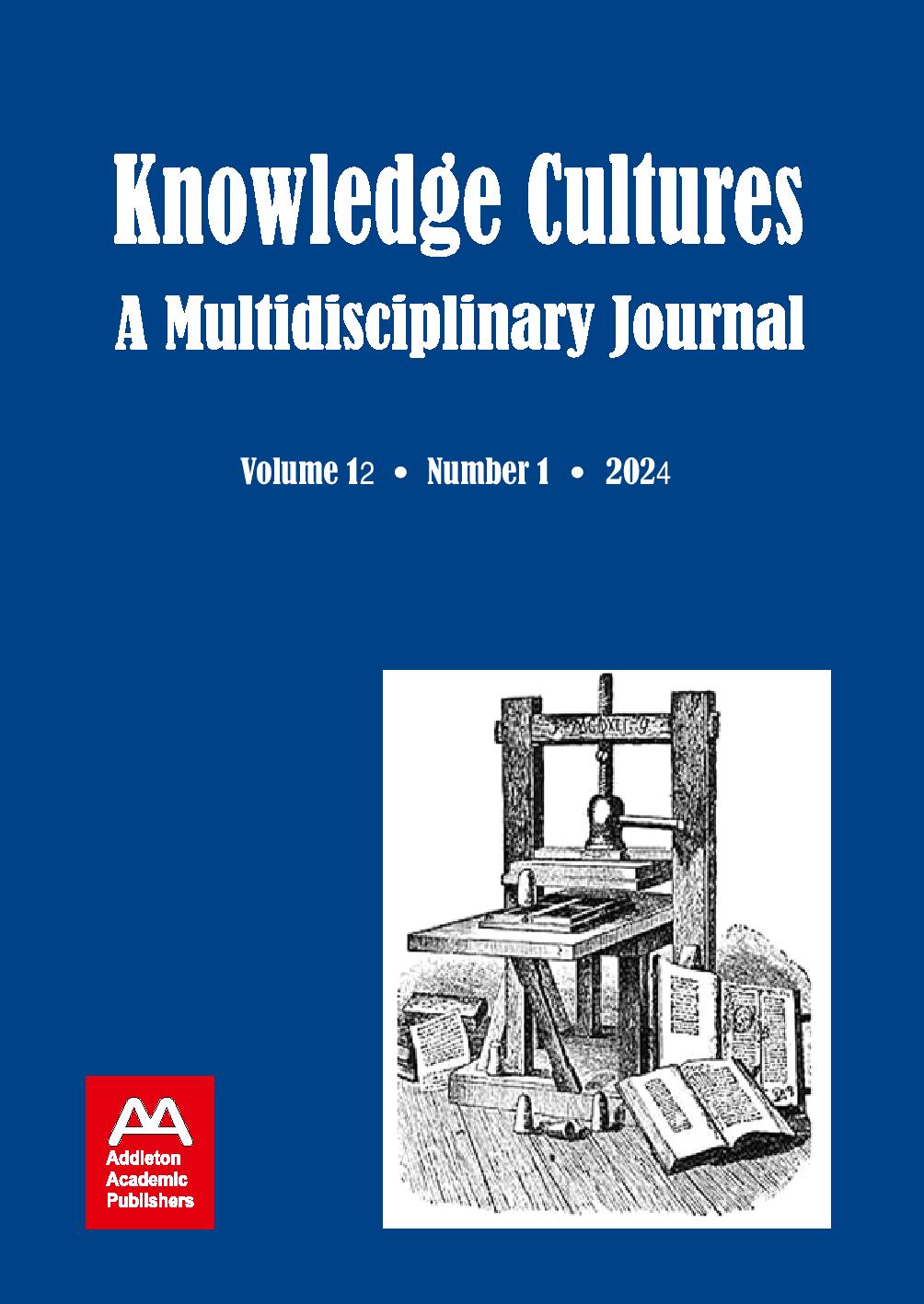
As national and global policies emphasise the significance of social inclusion, a sense of belonging has increasingly become economically rationalised. Social exclusion is posed as an economic risk, and so neoliberal systems have commercialised and commodified social inclusion, promoting a transactional and privatised approach to ‘belonging’. This issue is particularly significant in culturally diversifying urban contexts, as a desire to develop a transnational sense of belonging can be a central motivation for participants in recreational arts learning. In this article, we focus on how this economic mandate presents tensions in the non-formal arts education sector. While arts education businesses seek to gain the financial benefits of promoting a sense of belonging, they can wrestle with pedagogical philosophies that actively promote competition and hierarchies amongst learners. Our study, therefore, critically examines the experiences of migrant dance learners attending casual hip-hop classes in New Zealand. Engaging a qualitative, phenomenological research paradigm, our study gathers the personal narratives of these dance learners to reveal how the nexus of neoliberalism and inclusion is creating unresolved tensions in the hip-hop studio. While arts learning providers actively promote a sense of belonging as a dimension of their service, our study shows that learner expectations of and investment in social inclusion are confronted by prevailing studio pedagogies. This challenges common perceptions of non-formal arts education as inherently inclusive and establishes a framework for further critical research into the commodification of inclusion in the arts education sector.
More...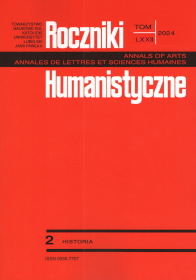
This paper explores the situation faced by Polish theatre and theatre professionals during the Soviet occupation of Lviv between 1939 and 1941. The Soviet authorities aimed to undermine Polish national culture by severing its roots and attempting to establish a new, foreign Polish-Soviet tradition. Consequently, Polish theatre was compelled to engage in propaganda activities aligned with the goals of the occupying state. The Soviet regime devised a cunning trap for Polish artists. On the one hand, it instilled fear through repressive measures against all Poles. On the other hand, it provided a certain level of security for theatrical professionals, treating them more leniently compared to their compatriots. Some individuals displayed extreme opportunism, actively parti- cipating in propaganda activities, while others took a more passive approach. However, there were also heroic attempts made by some to resist the occupiers, primarily through underground initiatives, often organised within Lviv’s Catholic Churches.
More...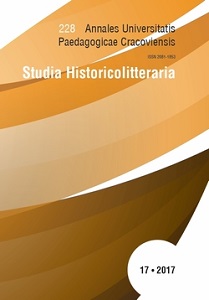
Report on Conference “Directors of Krakow stages in the years 1945–1989: famous, less known, worth remembering”, held at Pedagogical University of Commission of National Education in Krakow, from 19th to 20th of October, 2017.
More...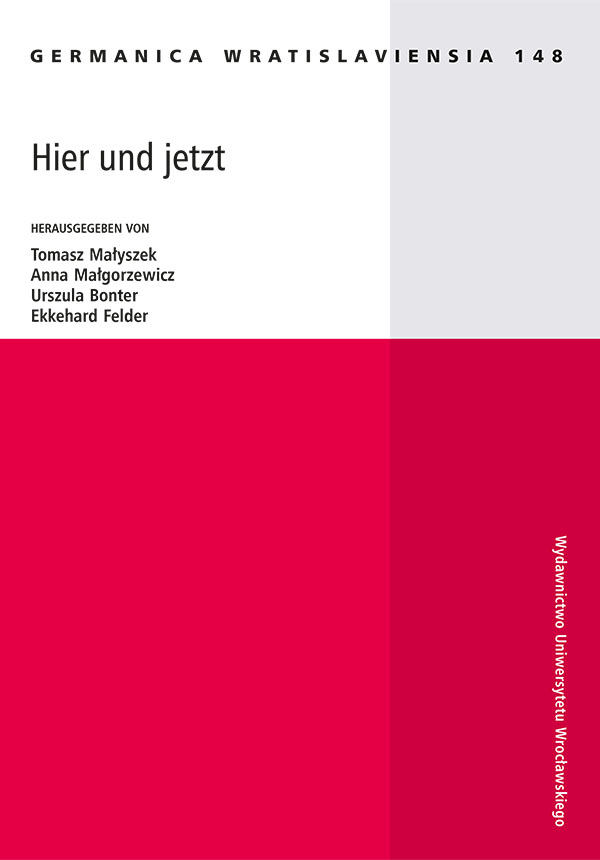
This article aims to provide an overview of moments in the history of the city of Wrocław that can be treated as caesuras in the study of the history of consumption and, moreover, to point to the cap- ital of Lower Silesia as an ideal example for tracing these processes. This is influenced by the rich geopolitical, migratory history of this city, which has an impact on the contemporary functioning, perception and logic of the city. Research in this area, not only in the context of Wrocław, is only at an early stage. However, they make it possible to learn not only about the processes of consump- tion, but also about leisure time behaviour, broadly defined culinary culture, tourism and theater. The history of consumption is the easiest way to study everyday culture.
More...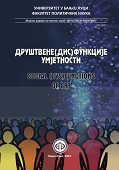
When it comes to the treatment of juvenile offenders and their resocialization, programs based on a dramatic approach in correctional facilities are divided into two categories: theater education programs and drama therapy programs. Determining the right boundary between the two categories is often problematic. The paper presents a dramatic approach used in the resocialization of juvenile offenders in the Banja Luka Correctional Facility. This approach in working with juvenile offenders affects a number of positive changes in their behavior, correction of antisocial attitudes, development of social skills, but also the reduction of disciplinary offenses and recidivism. The drama section has a therapeutic effect in the rehabilitation of juvenile offenders, and workshops in which scripts for plays are created have a prosocial impact on the wards of the home. What is especially important is that the plays performed by juvenile delinquents have a preventive effect on their peers, because through their true stories, they see the causes of deviant behavior in the best way, but also see where this wrong path leads them. Precisely the aim of this paper is to point out the importance of a dramatic approach in the prevention of risky behavior of children and youth, but also in the resocialization of juvenile offenders, who are in a correctional facility, as active participants in the play. Also, through this paper, we point out the specific role of social pedagogy in the institutional re-educational treatment of minors.
More...
The article stems from Jean-Paul Sartre’s concept of being in a situation, applied to examine two theatrical situations: the premiere of Oscar Wilde’s one-act tragedy “Salomé” in France, and the stage productions of the play in Estonia before and after World War II. The article demonstrates, in line with other studies, that in the French context, decadence mainly arises from the reluctance of bourgeois intellectuals to acknowledge their class membership and a yearning for the lifestyle of the aristocracy of the intellect, whereas in Estonia, (French) decadence is harnessed for cultural development and lofty aesthetic goals. It is noteworthy that “Salomé” is introduced to Estonian audiences during the building phases of the nation and hence also cul ture, both in 1919 and 1989. Due to spatial and temporal distance, the play’s sensuality wanes, and eroticism transforms into an exoticism of sorts. The directors find it challenging, and mostly do not aim, to apply the style and techniques characteristic of symbolism in the broader context of a realistic and psychological theatrical tradition. In conclusion, decadence, with its openness to the Other and inherent opposition to utilitarianism and progress, is inherently positive, and its retreat signals society’s stagnation and a pervasive bitterness.
More...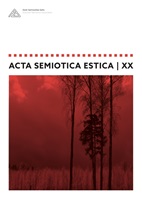
Alguses plaanisin esseele veidi teistsugust lähenemist, kuid kui jõudsin Juri Lotmani artiklikogumiku “Mida inimesed õpivad” viimase kahe artikli lugemiseni, tundsin, et tahan käsitleda miskit nendega seoses. Lotman sai nende kahe kirjutise toel minu silmis inimese mõõtme. Kuigi ka varemalt mõistsin tema olulisust ja hindasin väga tema mõtteid, siis artiklid “Me elame, sest oleme erinevad” ja “Me jääme ellu, kui oleme targad” avasid kogu ta tarkuse kõrval, mis olid maalinud temast kuskil kaugel asuva abstraktse intelligendi pildi, inimese, kes on tundnud minuga sarnaseid emotsioone; ja neist artiklitest kumas läbi murelikkust, samas ka lootust.
More...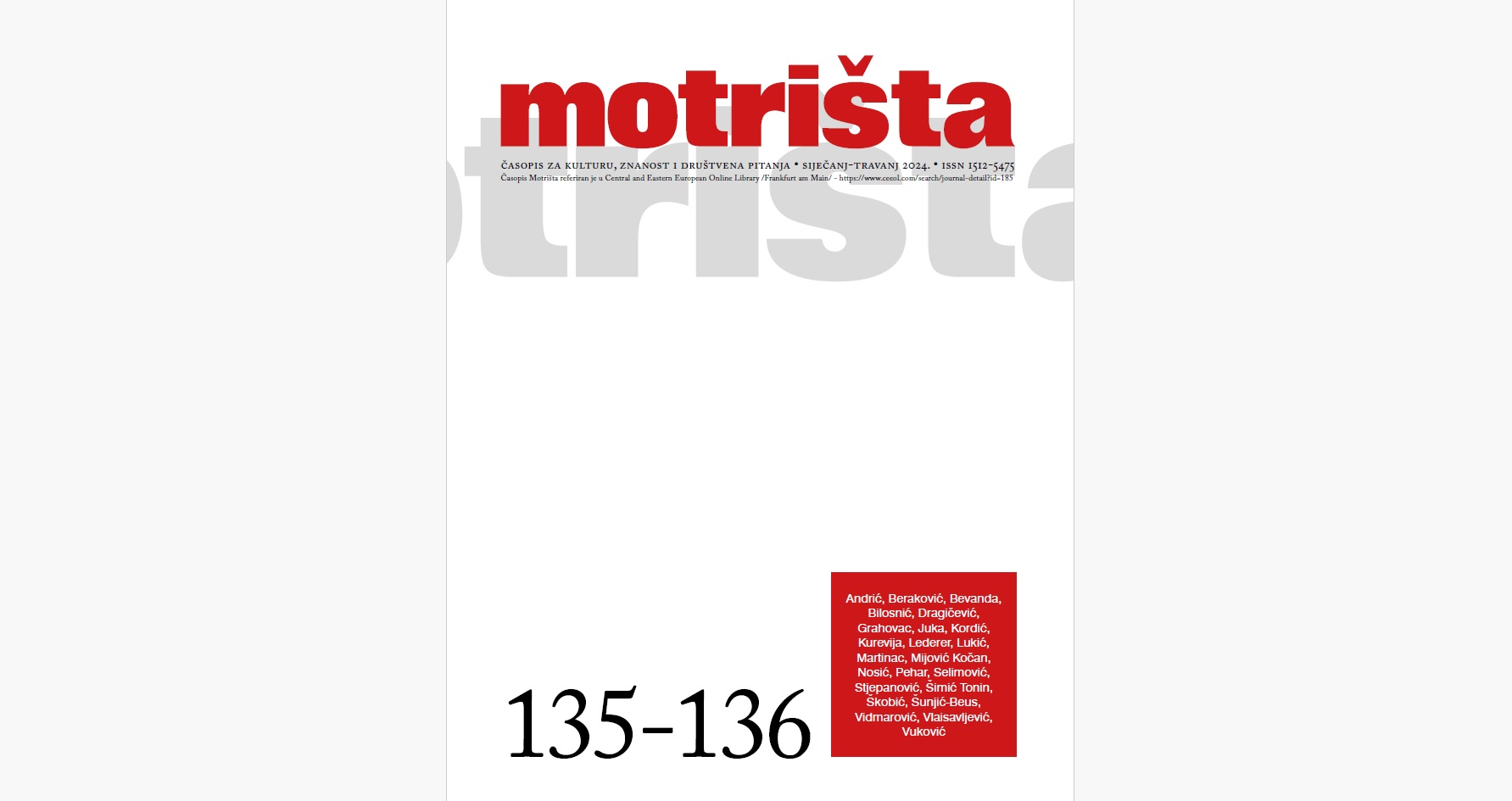
Sljedbenici umjetničkog, pedagoškog i teorijskog naslijeđa Branka Gavelle, nakon njegove smrti 1962. afirmiraju se kao redateljska generacija postgavelijanaca (Vladimir Habunek, Mladen Škiljan, Kosta Spaić, Dino Radojević, Georgij Paro i Božidar Violić, a četvorica među njima ističu kratkotrajno deklarativno zajedništvo poznato pod pojmom redateljskog kartela (Spaić, Radojević, Paro i Violić). Među njima se pak izdvajaju Paro i Violić, govoreći i pišući potonjih desetljeća u različitim prigodama i kontekstima o Gavellinoj redateljskoj i pedagoškoj metodi rada te utjecajima na vlastiti redateljski pristup, naposljetku ih zaokruživši u nizu svojih nezaobilaznih teatroloških knjiga o kazalištu. U radu se pokazuje kako su one ključne za rekonstrukciju njihovih redateljskih poetika utemeljenih u Gavellinoj Akademiji dramske umjetnosti, ali Violićeve knjige Lica i sjene i Isprika izdvojeno se analiziraju između ostaloga i s obzirom na njegovu iscrpnu analizu Gavellina redateljskog načina rada u praksi.
More...
Review of: Djetinjstvo koje traje – Lutkarenje, grad i mi (70 godina Lutkarskoga kazališta Mostar) Glavni urednik: Darko Juka. Autori tekstova: Jarosław Antoniuk, Antonija Bogner-Šaban, Ivo Brešan, Boris Čakširan, Gradimir Gojer, Nevenko Herceg, Darko Juka, Mario Kordić, Livija Kroflin, Tamara Kučinović, Edi Majaron, Tibor Oreč, Luko Paljetak, Ivan Vukoja. Izdavač: Lutkarsko kazalište Mostar, Mostar, 2022.
More...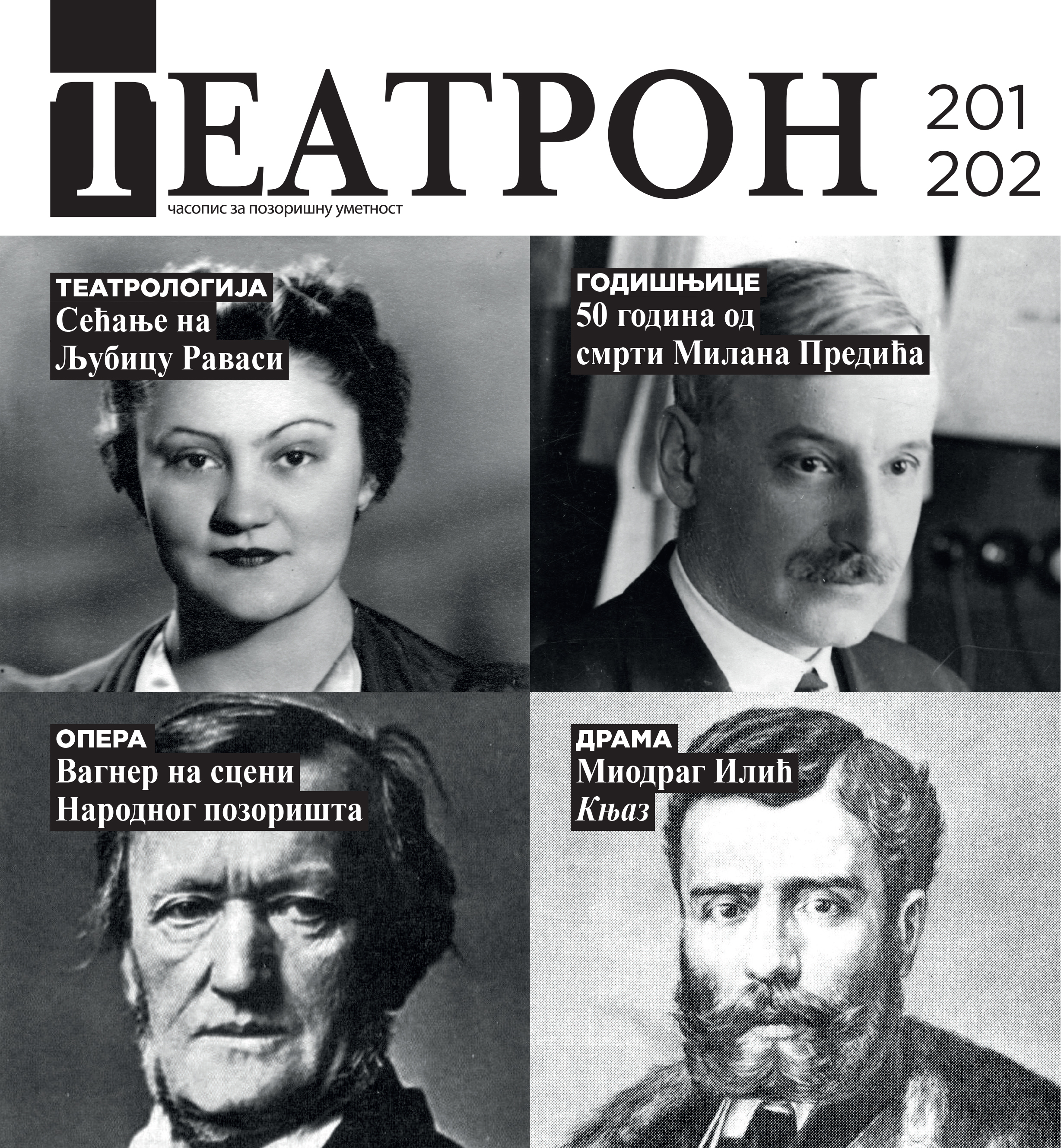
Review of: Народно позориште у огледалу времена, Листови и часописи у издању Народног позоришта у Београду Музеј позоришне уметности Србије, Први део, 2021, стр. 409; Други део, 2022, стр. 423
More...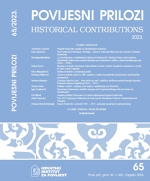
Il saggio interpreta per la prima volta la lettera dell’umanista croato Antun Vrančić (1504 – 1573) al patrizio veneziano e viceré di Cipro Carlo Cappello (1492 – 1547) del 1546. La lettera è stata scritta da Venezia durante il soggiorno di Vrančić presso Francesco Cappello, il figlio di Carlo. Un’attenzione particolare è rivolta alle descrizioni di Vrančić delle tradizioni veneziane durante il carnevale e la Festa della Sensa. Inoltre, vengono qui confermate alcune notizie biografiche relative a Carlo Cappello.
More...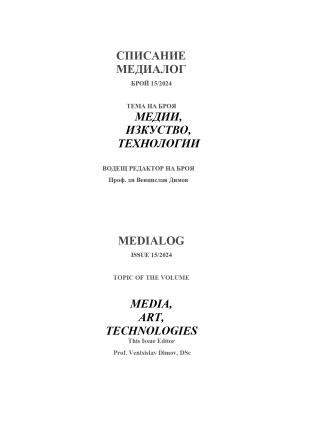
Academic Opera Theater of AMDFA "Prof. Asen Diamandiev" – Plovdiv is one of the representative units of the Academy. Since its inception, AOT has produced dozens of opera and operetta titles and numerous performances. The active creative activity deserves the appropriate research attention to emphasize the role of AOT in the education and stage realization of the students. The object of research presupposes the timely overview and presentation of the results based on the empirical method, giving opportunities to consider the issue from different aspects.
More...
У трећој књизи Изабраних дела Бране Цветковића (I–VIII) објављено је 48 Браниних радова из области драмског стваралаштва према хронолошкожанровском критеријуму. Приређивач Александар Пејчић (који је припремио и остала Бранина издања) дао је предност комедијама, најпре вишечинским, једночинкама и монодрамама. После комедија следе драме, иза којих су једна Бранина прерада и две његове пародије. Сва драмска дела су настала од 1898. до 1929. године. За време живота Цветковић је штампао известан број комада, док је у рукописној заоставштини оставио 121 оригинални драмски текст и 29 прерада и драматизација, као и превода. У овој књизи Пејчић је свих 48 текстова обележио годинама њихових настанака. Ова књига од 828 страница садржи још и критичке напомене објављених дела (с варијантама), податке о изведеним представама (театрографија), поговор (У позоришту код Бране) и више додатака (међу којима је библиографија).
More...
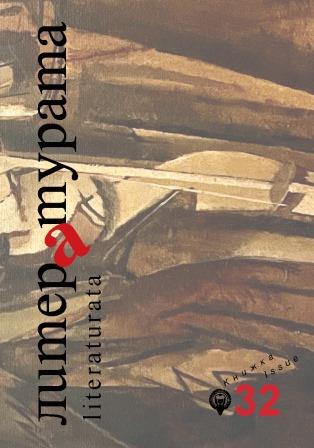
The article tries to answer the question of what causes the birth of theater as a specific artistic practice. The main thesis is that unlike narrative and performative genres, whose emergence requires an intermediate phase in the transition from mythological thinking and ritual practices to specific artistic activity, theater is born directly from ritual. The main reason for this is the need to move from the idea of a stable world order, the confirmation of which is the main task of the ritual, to the awareness and understanding of the fact that between this stable order and man, contradictions may arise. There are two reasons for this. According to the first hypothesis, the world order is good and just, but man intentionally or unintentionally violates it, which leads to suffering. To restore harmony, man must suffer punishment and perform sacrifice. According to the second hypothesis, evil forces temporarily gained the upper hand in the good and just communist order. Therefore, man must find a way to overcome them in order to restore harmony. Within the framework of the ritual festivals held in the Athenian polis, these two hypotheses were played out in special performances that preserved many of the characteristics of the ritual, within a single theatrical- ritual action. In the subsequent development of this quasi-ritual action, the specific theatrical genres of tragedy and comedy were born.
More...
This article explores the use of mimesis and mimicry in Sophocles’ Philoctetes (409 B.C.), focusing on Odysseus’ dramaturgical role through three interconnected critical moves. It foregrounds the figure of Odysseus at the play’s periphery to investigate his hitherto overlooked theatrical functions. Second, it conducts a close reading focused on aesthetic register rather than ethical considerations. Finally, it explores how one of Odysseus’ opening speech functions as a metatheatrical treatise on ancient acting techniques. By analyzing Odysseus’ role, the article elucidates how ancient Greek theatre conceived the actor’s craft of voice modulation, masks, and embodiment of passions. The paper concludes that tragedians, through their characters, engage in deception, mimicry and manipulation, challenging the audience’s perception of truth. It emphasizes the directorial insight and interpretation required to navigate conflicting narratives and highlights the actor’s ability to assume multiple identities and the art of non-identity. The study illuminates how theatrical virtuosity entailed a fluid mastery of self and non-self, as exemplified by Odysseus’ protean abilities.
More...
The article examines the reception of the dramatic poem “Peer Gynt” (1867) by Henrik Ibsen in Bulgaria. For this purpose, it traces the presence of the Norwegian playwright on the bulgarian stage from the first production of his play (“Nora”/“A Doll’s House”) in 1897 until today, analyzing the changes in the interpretation of his texts in different historical periods. In this context, the study focuses on the several attempts of Bulgarian directors and companies to show Ibsen’s early philosophical drama on stage. “Peer Gynt” has six productions in Bulgaria, the first of them was in 1922, and the latest one appeared exactly 100 years later, in 2022. This is the performance of the director Katya Petrova and the troupe of Sofia Theatre, which also stands as the most significant theatrical reading of Ibsen’s iconic text until now.
More...
In the article, in a comparativist and anticipatory mode of interpretation, are substantiated the convertible and non-convertible moments of the poetics of a literary work in bringing / adapting it to the theater stage. Choosing the classic novel in Bulgarian literature of the 20th century – “Antichrist” by Emiliyan Stanev – the author examines it in a multidirectional perspective: as a text claiming to be historic and reflecting the peoples psychology in the sublime moment before falling under Turkish dependence in the 14th century, and as a theatrical version in Stiliyan Petrov’s performance at the Ivan Vazov National Theater from the end of 2023. The subject of discussion is the principle of transfer from the book to the stage and the possibility of the theater as a medium updating the mental self-awareness of modern Bulgarian society through the problem of identity. In a broader context, the article attempts to problematize the complex and ambiguous relationship between theater and literature in its modern dimensions.
More...